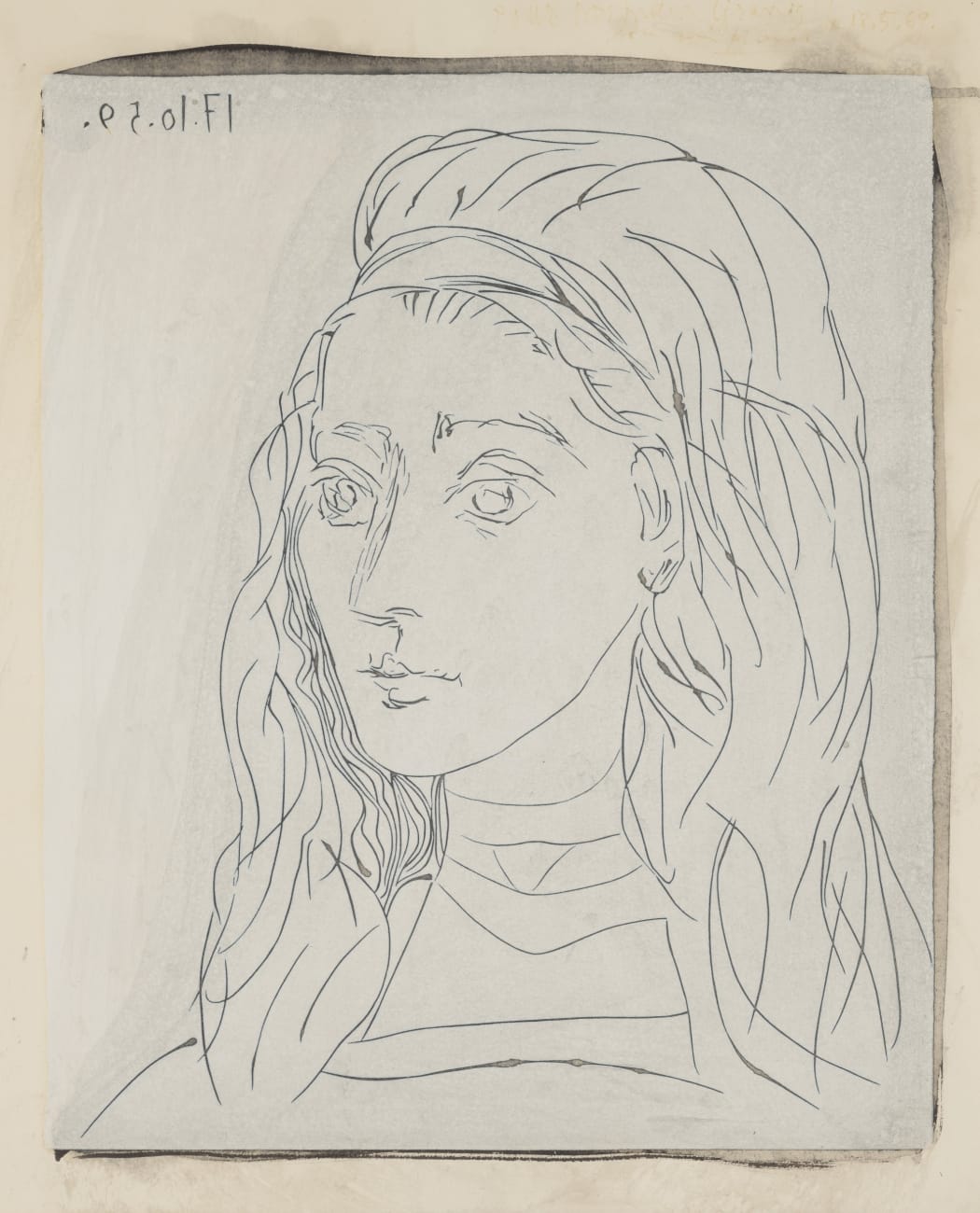
If you’ve kept up with our notes over the past two weeks, you’ll remember that in the late 50s, early 60s Picasso had moved south and as a happy circumstance, had found his way into making linocuts. And once he got started, he was making them left and right. By 1963, he’d amassed a large body of work and was beginning to feel like he’d exhausted the medium. But there was one last push of inspiration left. You can see the result above: it is a special impression of Portrait de Jacqueline (B923). What makes it so special?
Well, to create this image, Picasso had taken an unusual route. In 1959, he’d printed the original linocut – the same figuration of Jacqueline – by laying down a background of black ink, and then adding the lines of the image in a creamy white. The layering of the black and white created a light blue, grayish background color. This impression is, in itself, a beautiful rendition of Jacqueline’s by-now familiar characteristics: long nose, wide and thoughtful eyes, a thick cascade of pulled-back hair. Years later, in his period of experimentation, he returned to the already cut-out sheet. This time, he skipped the black background and printed a layer of the creamy white ink he’d used before. Next, by hand, he distributed the black ink. Where the creamy white had been printed, the black ink was not absorbed into the paper; but where the paper was exposed, the ink seeped into the sheet.
He took one last and important step. For a reason unknown to history but, all the same, wholly within character, Picasso took the dried impression into the shower. Standing in the bathtub, the shower’s spray gently rinsed the inky paper. The black ink was rinsed away from the paper where it had not been absorbed. Hence the term given to the unintentionally created works: épreuves rincées, or, rinsed proofs. He created a few of these impressions, each different, unique works.
When the print dried, the black lines of Jacqueline’s portrait were left softened and yet more distinct from the paper, whose naturalistic undulation gave her sudden, monumental dimension. The ink had formed fans of light, textured grey-blue, and the watercolor-esque mix of the creamy white and black had lent this impression the tranquil cast of the original – one that seems to emulate Picasso’s self-reported feeling about his relationship with Jacqueline: that he had finally found peace. But standing before this version, you can make out the remnants of the thick black ink at the curls of the paper’s edges where the water could not push it off or into the paper’s surface. It is imperfect, sure, but unflinchingly so; the print is a living document of history’s greatest printmaker trying something out. And gazing at it, you get another feeling that reminds you of love – that this artwork is something unplanned, incalculable, and for the twists and whims taken in its creation, inimitable.
Thanks to all of you that stayed with me throughout this ambling discussion of Picasso’s linocuts. Here’s hoping that the finale was worth the journey, and here’s wishing a safe and restful weekend ahead. Until next time.
